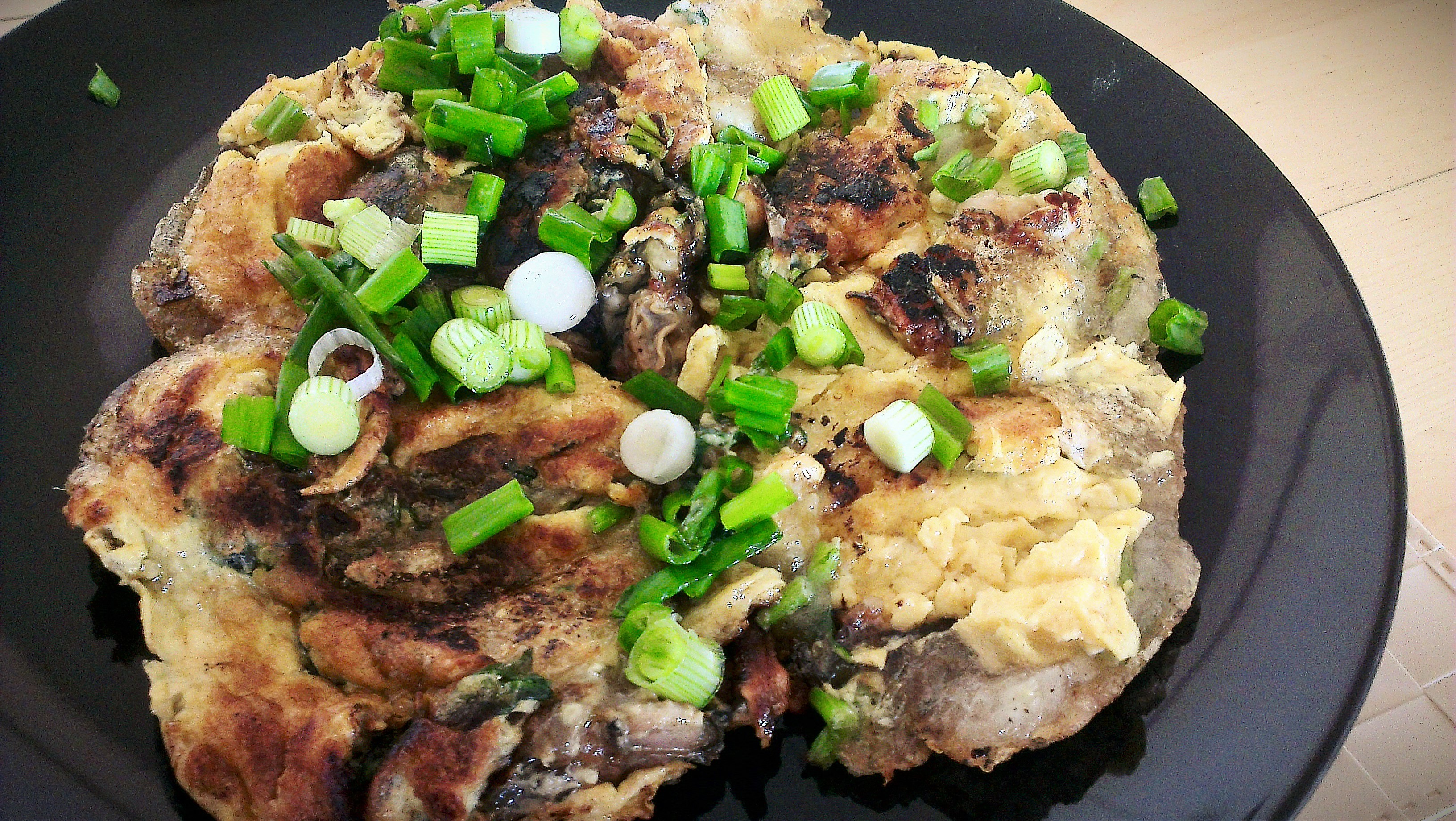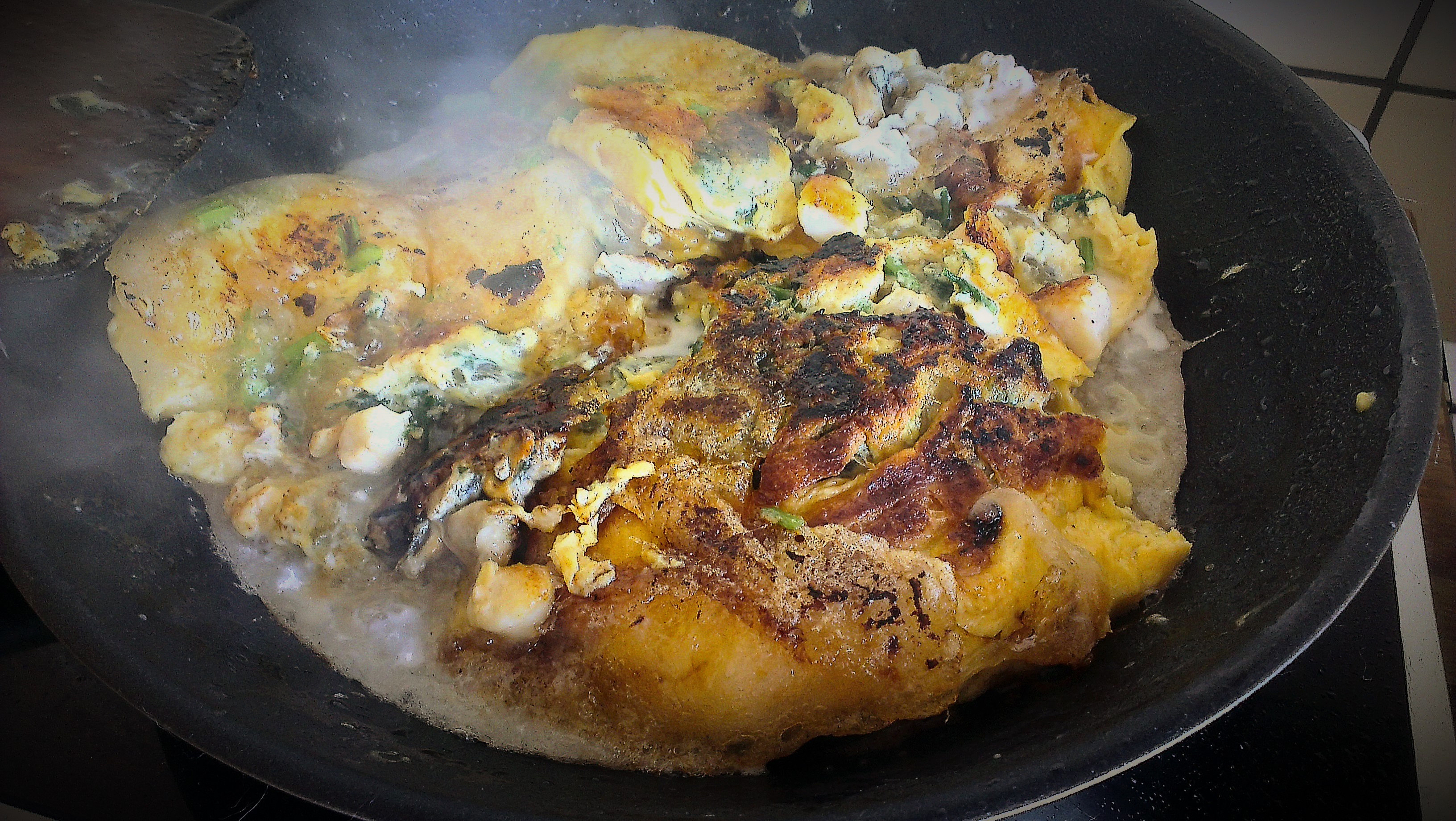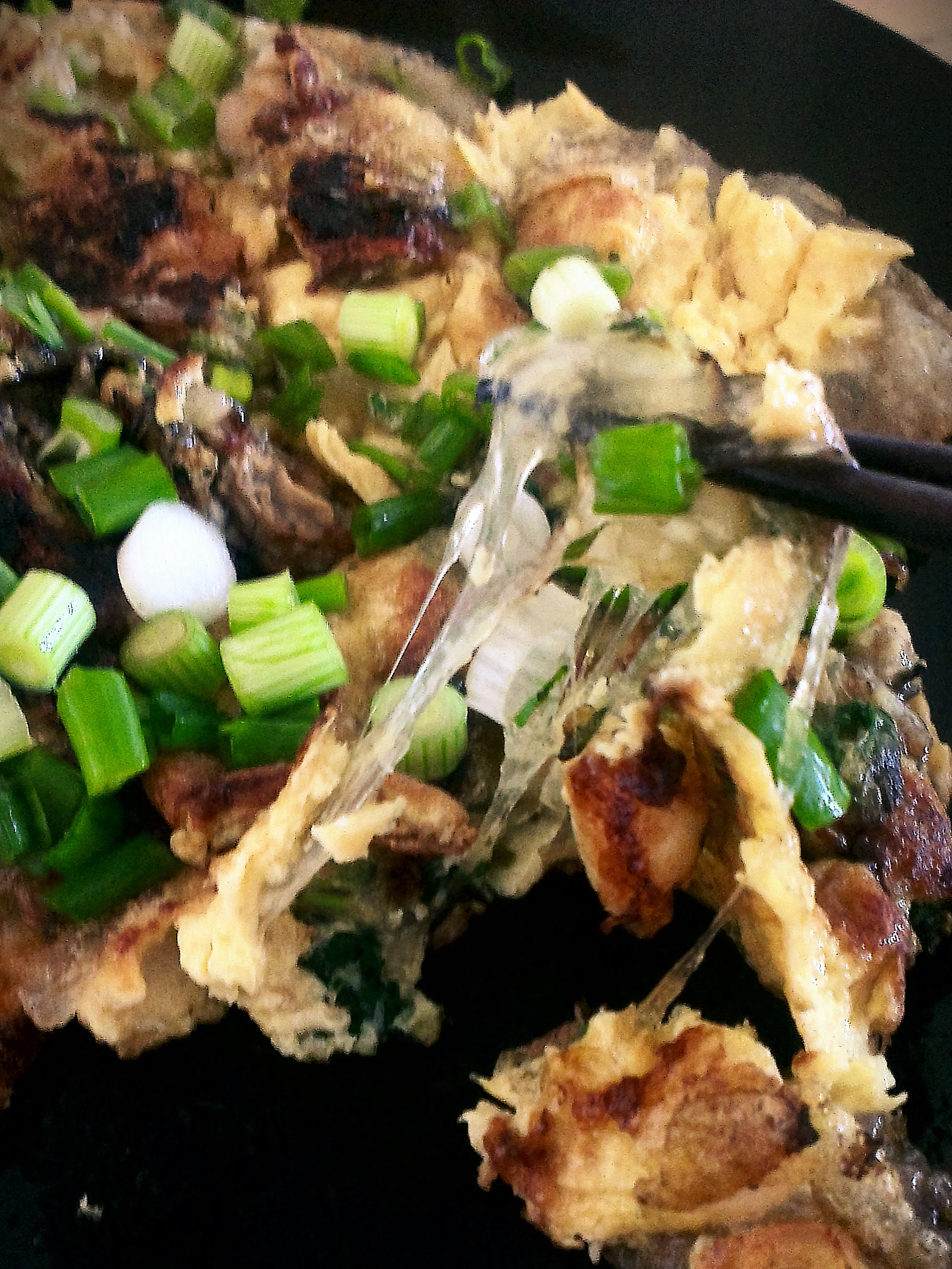
If you ever ask me what the signature dish of the Hokkien people is, I would answer this is it: the oyster omelette. All over the Min-language speaking regions (from the whole of Fujian province in China, the whole of Taiwan and the renegate Min-speaking Teochew community in Canton, to the Hokkien diaspora in Malaysia, Singapore, Indonesia and the Philippines), this dish continues to be eaten no matter where the Min people land up.
Shellfish is a staple of the Min people because these thrive all along the shallow rocky coastline of the Fujian province by the South China sea. Locals have a particular penchant for oysters, long before the French grew crazy about them. And they use them in another typical Hokkien dish, the Rice Vermicelli Soup with Oysters, that is now the national dish of Taiwan.
The recipe below is very much a Singaporean variation. The original recipe is not as complex, and is still made the same way in China and Taiwan. It is not so much the ingredients that are different but the way of preparing it is different, which I will explain later.
Serving: 2 persons
Ingredients:
- 7-8 unshelled fresh large oysters (Alternatively you can use frozen or canned oysters)
- 100ml water (only if you are using frozen oysters)
- 5tbs vegetable oil
- 4-5 eggs
- Fish sauce
- 5tbs tapioca flour
- 1tbs rice flour
- White pepper powder
- Fresh coriander
- 2 slices of calamansi or green lime
- Sambal chili sauce
Steps:
- Shell the oysters. Take care not to spill the juice that oozes out of the oysters when you open them. Set the oysters aside on a plate and the oyster juice in a separate bowl. If you are using canned oysters, do the same by collecting the water from the can. You should have at least 100ml of oyster juice. If you are using frozen oysters, defreeze them and set aside 100ml of water.
- Beat your eggs until they are foamy. Season with a dash of fish sauce. Set aside.
- To make your batter, put your mixture of flour together in a bowl and slowly add in your oyster juice or water. Mix well and set aside.
- Put your frying pan on high heat and pour in your oil. When the oil is hot, pour in half of your batter so that it forms a thin layer all over the pan. When it is brown and crispy, pour in your eggs. Let it set for a moment until it is cooked then turn it over to cook on the other side. Once the other side is cooked, use your spatula to cut up the omelette into smaller pieces. Add in more oil, then pour in the rest of your batter all over the omelette. Do not let the batter turn hard. Once it becomes thick and gooey, turn off the heat.
- Throw in your oysters into the omelette and give them a good toss around. The remaining heat will cook the oysters until they are half-cooked.
- Put the omelette on a plate. Top it with a dash of white pepper powder, a squeeze of calamansi juice and garnish with sprigs of coriander. Serve it with a dip sauce made with sambal chili sauce and calamansi juice.
Note: The use of oyster juice in the batter makes of course a world of difference in the taste! The Singaporean version attempts to combine crispiness with goo, hence this complex procedure, while the traditional version is quite simply crispy.
Variation: The traditional version is really much simpler: First fry an omelette with your oysters. Add in some finely-chopped vegetables like Chinese cabbage, beansprouts etc. Then pour your batter all over it to encase the omelette. Once the batter is hardened, turn it over to cook the other side.
Update (2013): Just did a Taiwanese version of Hokkien Oyster Omelette. The difference being it is not cut up in a mess in Taiwan and China, unlike in Singapore. And in the Taiwanese version, they add chrysanthemum garlands for extra bulk and fragrance.



